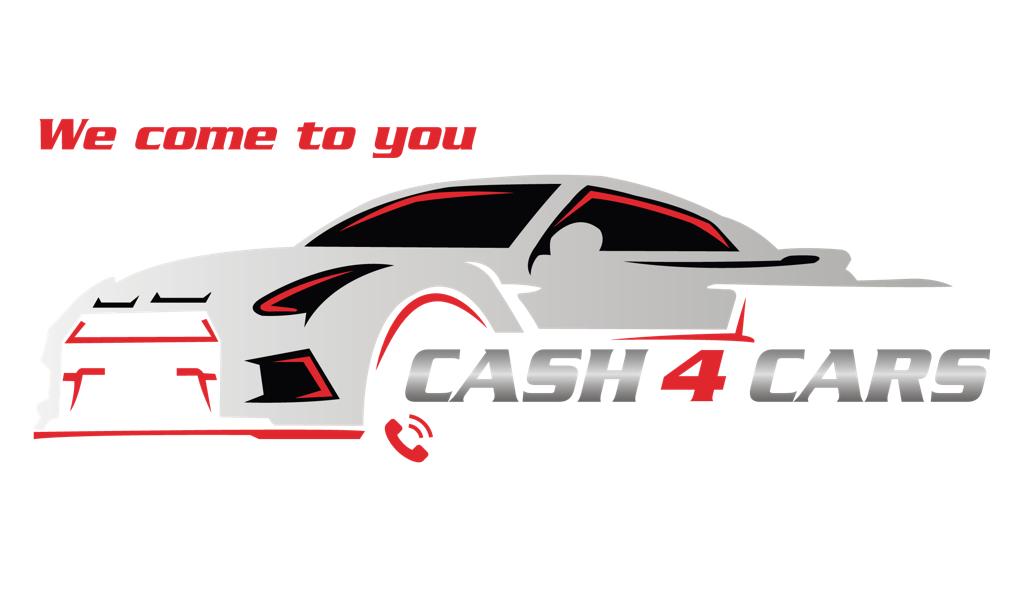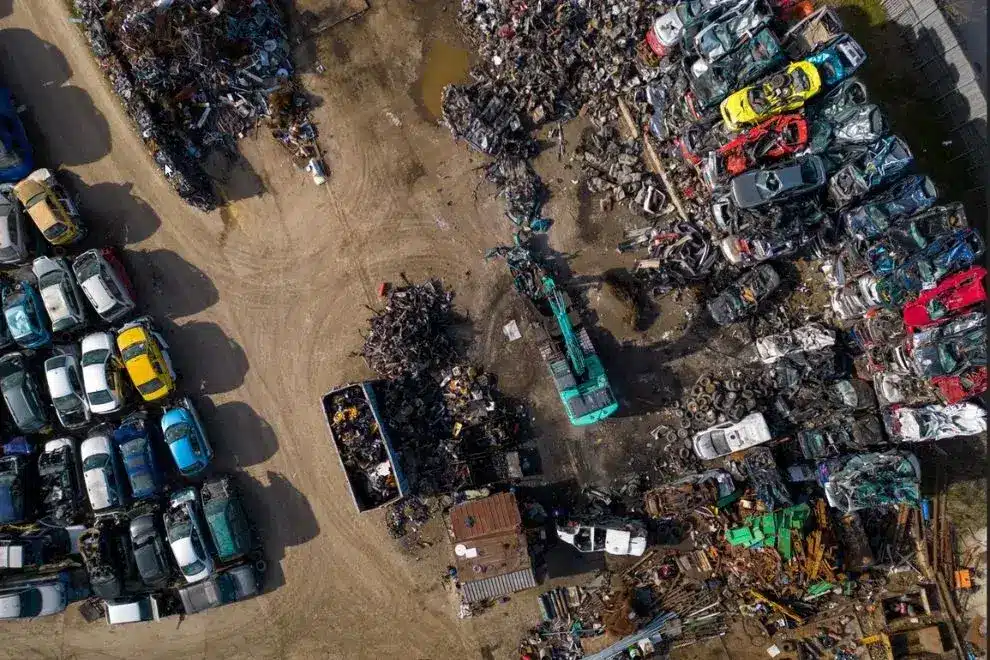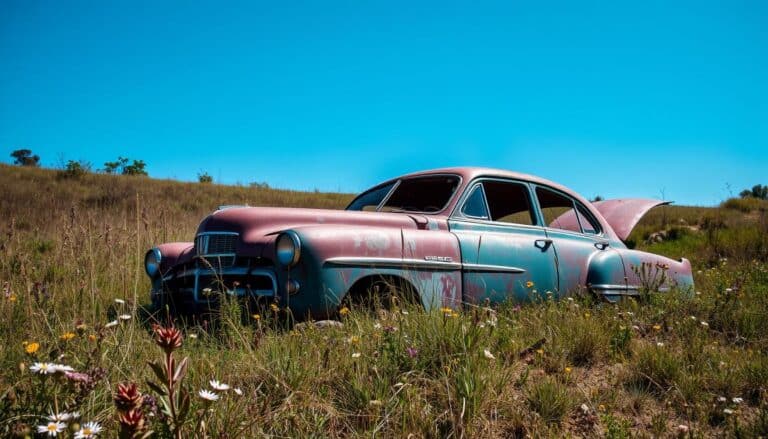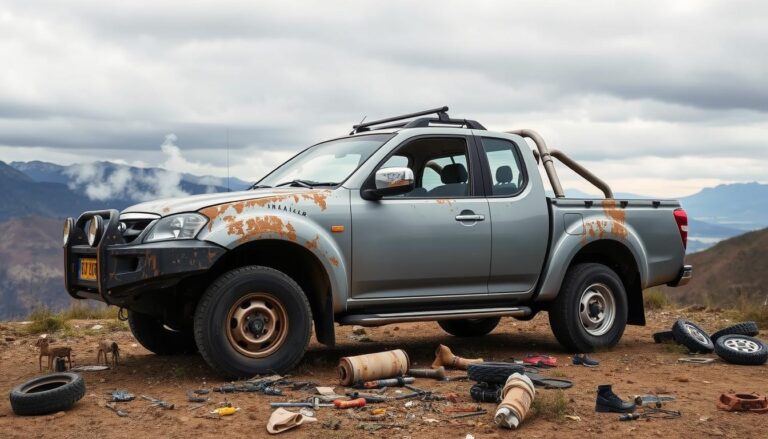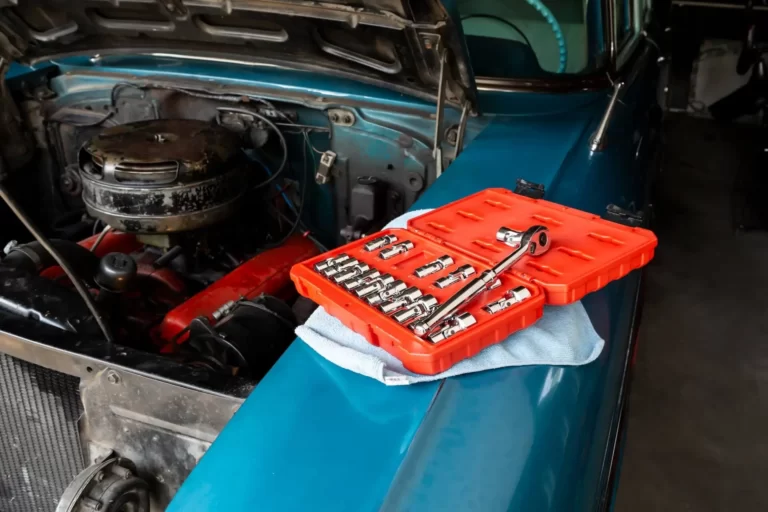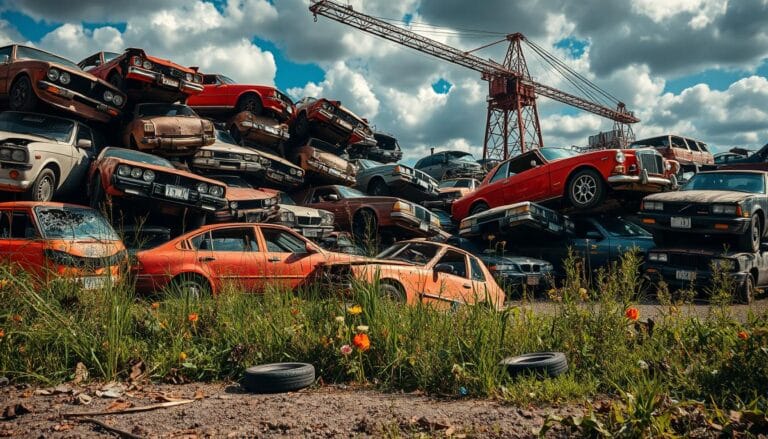What To Do Before Scrapping A Car
There comes a time in every car owner’s life when the decision to part ways with their beloved car becomes inevitable. This often happens when the vehicle has reached the end of its useful life or when the cost of repairs exceeds its value. But scrapping a car properly involves many steps, but with proper preparation, it can become a smooth, hassle-free experience that benefits both you and the environment.
In this blog post, we aim to provide a comprehensive guide to help you navigate the process, ensuring you are well-prepared and informed at every step. We will explore the various reasons for scrapping a car, from old or damaged vehicles to cases where repair costs outweigh the car’s worth. We will also emphasize the importance of proper preparation before scrapping a car, addressing environmental concerns, legal requirements, and potential financial benefits.
Assessing the condition of the car
Before making the decision to scrap your car, it’s crucial to assess its condition and determine whether it’s worth repairing. This step can save you from unnecessary expenses and ensure you make the most informed decision.
- Begin by consulting a trusted mechanic who can provide an expert evaluation of your car’s current state. They can help you identify any mechanical issues and the extent of damage and provide an estimated repair cost.
- Be sure to discuss the overall longevity of the car, as you’ll want to factor in future maintenance and repair costs when making your decision.
- Once you clearly understand the repair costs, compare them to the car’s market value. Suppose the cost of repairs exceeds the market value. In that case, it strongly indicates that scrapping the car is the most financially sound decision.
- However, before committing to scrapping, explore alternative options that might yield better returns or serve a different purpose. Consider selling the car as-is, particularly if the car still runs or if the issues are primarily cosmetic. This option can appeal to buyers looking for a fixer-upper or a source of spare parts.
- Another alternative is donating the car to charity. Many organizations accept vehicle donations, regardless of their condition, and may provide you with a tax deduction in return. This option not only helps a good cause but can also offer some financial relief.
- Lastly, you can part out the car and sell individual components to buyers needing specific parts. This process can be time-consuming but potentially generate more income than scrapping the entire vehicle.
But the main thing is carefully assessing the condition of your car and considering all available options will ensure you make the best decision for your situation. By weighing the pros and cons of repairing, selling, donating, or parting out your car, you can confidently move forward with the choice that best suits your needs.
Choosing a reputable scrapyard
Selecting a reputable scrapyard is the next step the in the process to ensure a smooth and hassle-free scrapping process. A trustworthy scrapyard will adhere to environmental regulations, offer fair compensation for your car, and provide reliable customer service. Follow these steps to find the right scrapyard for your needs:
- Research local scrapyards: Begin by searching online for scrapyards in your area. Compile a list of options, paying close attention to their proximity, as this may affect towing fees.
- Check online reviews and ratings: Investigate each scrapyard’s reputation by reading customer reviews on platforms like Google, Yelp, or social media. Look for recurring themes in the feedback, such as prompt service, fair pricing, or any potential issues to be aware of.
- Consult friends and family for recommendations: Contact your network for personal experiences and referrals. This firsthand information can offer valuable insight into the scrapyards’ trustworthiness and customer service.
- Compare offers from multiple scrapyards: Contact several scrapyards to request quotes for your vehicle. Provide accurate information about your car’s make, model, age, and condition to ensure you receive precise estimates.
- Factor in additional costs: Remember to account for extra expenses, such as towing fees, when comparing quotes. Some scrapyards may offer free towing, while others might charge based on distance.
- Verify the scrapyard’s licenses and certifications: Confirm that the scrapyards on your shortlist possess the necessary licenses and certifications to operate legally. This ensures they comply with local and federal regulations, safeguarding you and the environment.
- Ensure compliance with environmental regulations: Choose a scrapyard committed to eco-friendly practices, such as recycling and properly disposing of hazardous materials. This reduces the environmental impact of scrapping your car and helps protect our planet.
Following these steps, you can confidently select a reputable scrapyard that prioritizes customer service, fair compensation, and environmental responsibility.
Preparing the necessary paperwork
Scrapping a vehicle is a legal process that must be carried out in accordance with local and state laws. Proper documentation ensures the process goes smoothly and avoids potential legal issues. This guide will outline the paperwork and steps required to scrap a vehicle in Australia in a business writing style and informative tone.
Proof of Ownership
Proof of ownership is the first and most important document required when scrapping a vehicle in Australia. This is typically in the form of a vehicle registration certificate containing the vehicle’s details and owner’s information. Suppose you do not have the original registration certificate. In that case, you can request a copy from your state’s road and transport authority.
Notification of Vehicle Disposal
Once you have established proof of ownership, you must notify the appropriate government body of your intention to dispose of the vehicle. This is usually done by submitting a ‘Notification of Vehicle Disposal’ form. The form can be found on the website of your state’s road and transport authority and should be completed with accurate information about the vehicle and its intended disposal method.
Vehicle Identification Number (VIN) or Chassis Number
Before scrapping your vehicle, you should record its Vehicle Identification Number (VIN) or chassis number. This unique identifier is typically found on a metal plate on the dashboard, engine bay, or door frame. Recording the VIN or chassis number ensures the vehicle can be properly identified and traced.
Personal Property Securities Register (PPSR) Check
Conducting a Personal Property Securities Register (PPSR) check before scrapping your vehicle is crucial. This online check will reveal the vehicle’s outstanding financial or security interests. If there are any outstanding debts, you must settle them before disposing of the vehicle. You can access the PPSR by visiting the Australian Government’s PPSR website and paying a nominal fee.
Vehicle registration document (V5C)
The vehicle registration document (V5C) is the vehicle logbook and is the most important document required to scrap your car. It proves that the car you are about to sell for scrap belongs to you and stops unauthorized sales. The V5C contains important information about your car, such as its make and model, engine size, and color. It also contains information about the vehicle’s registered keeper and the vehicle’s registration number.
Yellow slip from your vehicle registration document known as the V5C/3
The yellow slip from your vehicle registration document, the V5C/3, is a section of the V5C that you need to fill in and send to the DVLA when you sell your car for scrap. It contains important information about your car, including its make and model, engine size, and color. It also contains information about the vehicle’s registered keeper and the vehicle’s registration number.
Certificate of Destruction (CoD)
the Certificate of Destruction (CoD) is a document that proves that your car has been scrapped and that it will no longer be used on the road. It is issued by the ATF when they receive your car for scrap. The CoD contains important information about your car, such as its make and model, engine size, and color. It also contains information about the vehicle’s registered keeper and the vehicle’s registration number.
Removing valuable components and personal belongings
Before sending your car to the scrapyard, removing any valuable components and personal belongings is essential. This process ensures you maximize the potential value of your car and protects your items from being lost or discarded.
Start by identifying valuable parts that can be sold or reused. Common components with resale value include the battery, catalytic converter, tires, and rims. If your car has an aftermarket GPS or stereo system, these can be removed and sold separately. Remember that dismantling certain parts may require specialized tools or expertise, so enlist the help of a professional if necessary.
Next, take the time to retrieve personal belongings from your car. Thoroughly search the glove compartment, trunk, and underneath the seats for items that might have been forgotten over the years. This step is crucial, as retrieving personal items becomes nearly impossible once your car is scrapped.
Lastly, it’s important to properly dispose of hazardous materials before scrapping your car. This includes draining fluids such as oil, coolant, and gasoline, which can pose environmental risks if not handled responsibly. Collect the fluids in appropriate containers and consult local waste disposal facilities or recycling centers to learn about proper disposal methods in your area.
Additionally, remove the car’s air conditioning system, as it may contain refrigerants that a professional must handle.
By thoroughly removing valuable components and personal belongings and properly disposing of hazardous materials, you’re maximizing the value of your car and taking responsible steps to minimize environmental impact. This diligence helps ensure smooth and efficient scrapping while safeguarding your interests and the environment.
Preparing the car for transportation
Once you’ve decided to scrap your car and have completed the necessary preparations, it’s time to arrange transportation to the scrapyard. Follow these steps to ensure a smooth and hassle-free process.
Assess transportation options: Determine the best method for getting your car to the scrapyard. If the car is still operable, you can drive it there yourself. However, if the car is inoperable, you must arrange towing services. Some scrapyards offer free or discounted towing as part of their service, so be sure to inquire about this option.
Arrange for transportation:
- After deciding on the most suitable transportation method, schedule a pick-up date and time with the towing service or scrapyard.
- Provide information such as your car’s make, model, and location to ensure a seamless pick-up process.
- Be aware that towing fees may apply, so factor these costs into your decision.
Make the car accessible for pick-up: Clear a path for the tow truck to access your car, removing any obstacles that might hinder the pick-up process. If your car is parked on a public street, inform your neighbors about the upcoming pick-up and check for any local regulations or permits required for towing.
Properly preparing your car for transportation to the scrapyard can minimize potential complications and ensure a smooth, efficient process. Taking the time to assess your options, arrange transportation, and make your car easily accessible will contribute to a successful and stress-free experience.
Finalizing the transaction
Once you have completed all necessary preparations, it’s time to finalize the transaction and officially scrap your car. To ensure a seamless experience, follow these crucial steps:
- Ensure proper documentation at the scrapyard: When you arrive, be prepared to present the car’s title and any other required paperwork. This documentation is essential to prove ownership and confirm your legal authority to scrap the vehicle. Having all the necessary paperwork can avoid delays and complications during the transaction.
- Receive payment for the scrap value of the car: Upon completing the documentation process, you will receive payment for the scrap value of your car. It’s essential to ensure that the payment is in the agreed-upon form (cash, check, etc.) and that the amount aligns with the initial quote you received. If there are discrepancies, address them immediately with the scrapyard staff to resolve any issues before leaving the premises.
- Follow up on any additional requirements: Depending on your location, there may be specific follow-up actions you need to take after scrapping your car. For instance, when scrapping your car in Melbourne, Victoria, it’s crucial to have your vehicle registration information at hand. By law, car scrapping businesses are prohibited from dealing with unidentifiable vehicles. You can only scrap a car if you possess the legal authority to do so. Suppose it’s necessary to transfer the ownership of your car before scrapping. In that case, you can access your myVicRoads account, submit your roadworthy certificate, and pay the relevant transfer fee and motor vehicle duty (if required).
By diligently following these steps, you can confidently finalize the transaction, knowing that you have met all legal and environmental requirements. Scrapping your car can be a complex process, but with proper preparation and attention to detail, you can navigate it smoothly and responsibly.
Conclusion
Preparing to scrap a car is crucial for a smooth, efficient, and responsible process. You can make informed decisions and avoid legal issues by carefully assessing your car’s condition, exploring alternatives, choosing a reputable scrapyard, and handling the required paperwork.
Adhering to local regulations and scrapping at a certified facility ensures proper disposal and contributes to a sustainable future. Removing valuable components can also yield financial gains. By following this guide, you can confidently and responsibly dispose of your old car in an environmentally friendly and financially beneficial manner.
Frequently Asked Questions
Q: What is meant by scrapping a car?
A: Scrapping a car refers to removing a car from road use and preparing it to be sold as scrap metal.
Q: What are the 5 things to do before scrapping a car?
A: The 5 things to do before scrapping a car are:
-Remove all valuable parts
-Cancel your registration and license plates
-Deal with any relevant paperwork
-Empty the car’s interior
-Remove all personal belongings from the car
Q: How can I scrap my car for cash?
A: You can scrap your car for cash by contacting a scrap yard or car removal service that offers cash for cars. They will provide a quote and arrange for the car to be picked up.
Q: What should I do with my car before handing it over to a wrecker or scrap yard?
A: Before handing over the car to a wrecker or scrap yard, remove any personal belongings and all valuable parts. Next, cancel your registration and license plates, and deal with any relevant paperwork.
Q: What paperwork should I deal with before scrapping my car?
A: The paperwork you should deal with before scrapping your car varies depending on your location and circumstances. In general, it’s best to deal with any relevant paperwork related to ownership of the car, cancellation of registration, and transfer of ownership.
Q: Can I scrap my car if it’s not made of metal?
A: While most cars are made primarily of metal, some newer cars may have a significant amount of non-metal materials. You can still scrap a car that contains non-metal materials, but it may affect the value of the scrap metal.
Q: Is it best to scrap my car or try to sell it privately?
A: Whether it’s best to scrap your car or try to sell it privately depends on the condition of the car and the demand for its parts. In some cases, it may be more profitable to part out the car and sell its components privately. In other cases, it may be easier and more convenient to scrap the car.
Q: What should I do with the license plates when scrapping my car?Q: What should I do with the license plates when scrapping my car?
A: When scrapping your car, you should cancel your registration and return your license plates to the DMV or relevant transport authority. If you plan to scrap your car and buy another car, you may be able to transfer the license plates to the new vehicle.
Q: Can I drive the car to the scrap yard?
A: In some cases, you may be able to drive the car to the scrap yard yourself. However, if the car is in very poor condition or is not drivable, you may need to hire a car removal service to transport it.
Q: What is the best way to get rid of my old car?
A: The best way to get rid of your old car depends on its condition and your goals. If you want to make some extra cash and the car is drivable or has valuable parts, you may want to consider selling it privately or parting it out. If the car is not in good condition or you simply want to dispose of it quickly, scrapping it may be the best option.
Q: What should I do if I plan to scrap my car and buy another car?
A: If you plan to scrap your car and buy another car, make sure to handle the relevant paperwork and cancellation of registration before you hand over the car. You may also be able to transfer your license plates to the new vehicle.
Q: How do I determine if my car is worth repairing before scrapping it?
A: Assess the condition of your car by consulting a trusted mechanic and comparing repair costs to the car’s market value. Explore alternative options, such as selling the car as-is, donating it to charity, or parting it out.
Q: What should I consider when choosing a reputable scrapyard?
A: Research local scrapyards, check online reviews and ratings, consult friends and family for recommendations, compare offers from multiple scrapyards, verify their licenses and certifications, and ensure they comply with environmental regulations.
Q: What paperwork is necessary for scrapping a car?
A: Gather proof of ownership, complete a ‘Notification of Vehicle Disposal’ form, record the Vehicle Identification Number (VIN) or chassis number, conduct a Personal Property Securities Register (PPSR) check, and ensure all required documents are in order.
Q: How can I prepare my car for transportation to the scrapyard?
A: Assess transportation options (driving or towing), arrange transportation with a towing service or scrapyard, make the car accessible for pick-up, and consider any potential towing fees.
Q: What steps should I follow to finalize the transaction when scrapping a car?
A: Present the car’s title and required paperwork, receive payment for the scrap value of the car, and follow up on any additional requirements, such as transferring ownership or completing specific local procedures.
